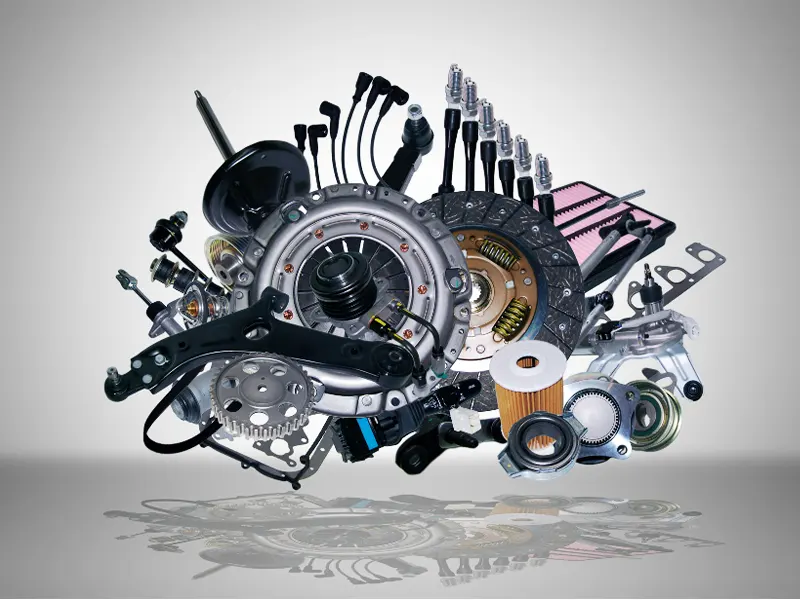When replacing a blown or leaking head gasket, it is highly recommended to replace the gasket itself along with several other engine parts and seals.
At a minimum, the head gasket, cylinder head bolts, head gasket sealant, intake/exhaust manifold gaskets, and engine coolant and oil should be renewed. Additional gaskets and seals like the valve cover, thermostat housing, water pump, and timing belt/chain should also be strongly considered for replacement if showing wear or disturbed during the repair.
The head gasket seals the junction between the engine block and the cylinder head, so replacing it is a critical repair. But reusing old head bolts, gaskets, and seals can compromise the repair’s integrity. With labor accounting for most of the $1000-$2000 total cost, replacing these additional parts ensures a complete fix and prevents future failures.
The extensive disassembly and precision required make this an advanced procedure best left to professional technicians. Proper torque techniques and attention to every detail are imperative.
What to replace when replacing head gasket?
Replacing a blown or leaking head gasket is a major engine repair job. In addition to the head gasket itself, there are several other parts that should be replaced at the same time to ensure a reliable repair and prevent repeat failure.
1. Head Gasket
The head gasket seals the junction between the engine block and the cylinder head. Over time, extreme heat cycles can cause the gasket to fail. Replacing the head gasket is the primary repair, but the gasket alone won’t fix the underlying cause or prevent future problems.
2. Cylinder Head Bolts
The head bolts clamp the cylinder head to the engine block and must be torqued to precise specifications. Reusing old and stretched bolts can lead to inadequate clamping force. It’s recommended to replace head bolts rather than reuse them.
3. Head Gasket Sealant
A high-quality sealant should be applied to both sides of the new head gasket and mating surfaces. Sealant fills in microscopic imperfections to improve sealing. High temp silicone or copper sealants specifically designed for head gaskets are best.
4. Intake/Exhaust Manifold Gaskets
Removing the manifolds to access the cylinder head often damages the old gaskets. It’s good practice to install new intake and exhaust manifold gaskets when doing a head gasket job.
5. Valve Cover Gasket
The valve cover gasket commonly leaks oil due to the same extreme engine temperatures that damage head gaskets. It’s smart to replace the valve cover gasket.
6. Thermostat Housing Gasket
Accessing the thermostat housing is required in many head gasket repairs. The old gasket is often damaged during removal. A new housing gasket prevents future leaks.
7. Water Pump Gasket
The water pump must frequently be removed to access the cylinder head. It’s an opportune time to replace its gasket and prevent leaks.
8. Oil Pan Gasket
Removing the oil pan is sometimes required for access or to check for sludge and debris. Replace its gasket at the same time.
9. Timing Belt/Chain
Many engines call for timing belt/chain replacement at a specific mileage. Since the timing components are disturbed during cylinder head removal, it’s an ideal time to replace the belt or chain if due.
10. Coolant & Oil
Complete draining and replacement of engine coolant and oil are required following a head gasket repair. Use the specified grades and change intervals per the owner’s manual.
The extensive labor for a head gasket replacement makes it cost-effective to replace these additional gaskets, seals, and components. The small extra parts cost is minor compared to the substantial labor charges. Doing so ensures a complete and lasting repair.
Cost of replacing the head gasket
The total cost to replace a head gasket can range from $1000 to $2000 or more depending on the specific vehicle and repair scope. This major engine repair involves extensive labor which is the majority of the overall cost.
- Parts Cost: The head gasket itself may cost $50-$300 depending on engine size and type. Gaskets, seals, head bolts and other recommended parts can add $200 or more in additional parts cost.
- Labor Cost: Book time for head gasket replacement is typically 8-20 hours or more. At average shop labor rates, this translates to $800-$2000 or more in labor cost. The extensive time is due to the complexity of disassembly and carefully torquing the new head bolts.
- Total Cost: With parts and labor combined, the total head gasket replacement cost often falls in the $1200-$2200 range, but can be higher for some vehicle configurations. Getting quotes from several shops is recommended.
How to replace a head gasket
Replacing a head gasket is an advanced, meticulous mechanical procedure that requires special tools, precision torque techniques, and experienced technicians. But in general terms, the process involves:
Step-by-Step:
- Drain engine oil and coolant completely
- Disconnect negative battery terminal
- Remove the intake manifold, exhaust manifolds, and accessory components to access the cylinder head
- Disconnect and remove the cylinder head, being careful not to damage surfaces
- Inspect head and block surfaces for damage or warpage
- Clean and prepare all gasket mating surfaces
- Install new head gasket with sealant, following proper orientation
- Install new head bolts according to sequence and torque procedure
- Tighten bolts to precise specs in proper sequence in steps
- Install manifolds, components, and reconnect everything
- Refill cooling system and engine oil
- Test repair thoroughly
Tips and Tricks
- Be meticulously clean when working on gasket surfaces
- Follow the shop manual torque sequence and specs exactly
- Use a torque wrench for final tightening
- Don’t reuse stretched or damaged head bolts
- Check for debris in oil and coolant passages
- Verify proper coolant level and bleed air from system
- Use gasket sealant on both sides of new gasket
- Road test thoroughly to confirm normal operation
With proper procedures and care, a head gasket replacement should yield a dependable, long-lasting repair. Attention to every detail is critical.
What causes a head gasket to need to be replaced?
A head gasket can fail due to extreme engine heat cycles, corrosion, improper torque of the head bolts, or warping/damage of the head or block sealing surfaces.
Do you need to replace head bolts when replacing the head gasket?
Yes, it is recommended to replace the head bolts when replacing a head gasket, as reusing old bolts can result in inadequate clamping force on the repaired head gasket.
How to determine if your head gasket needs to be replaced?
Symptoms of a blown head gasket include engine overheating, oil in the coolant, coolant loss with no visible leaks, engine misfires, white exhaust smoke, and excessive pressure in the cooling system. A compression test or chemical test on the coolant can also diagnose a failing head gasket.

John Smith, a Los Angeles-based car specialist and automotive writer, boasts over 20 years in the industry. With a background as a master technician and a decade-long writing stint at notable automotive publications, John now shares his expansive knowledge on CarFinite, simplifying car maintenance for readers.

